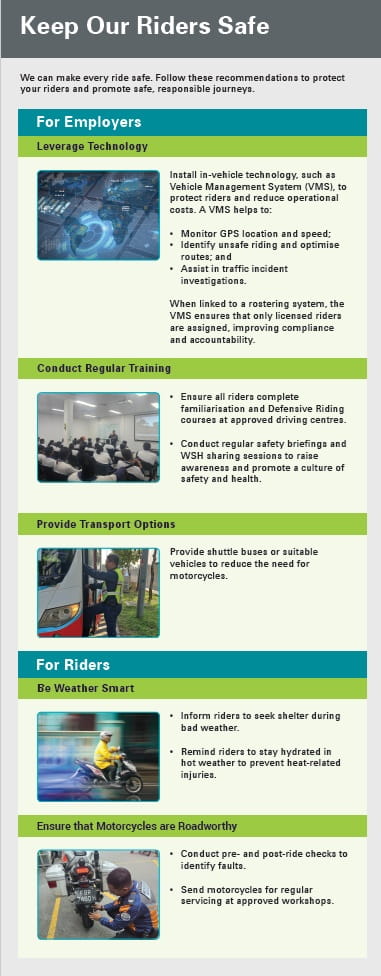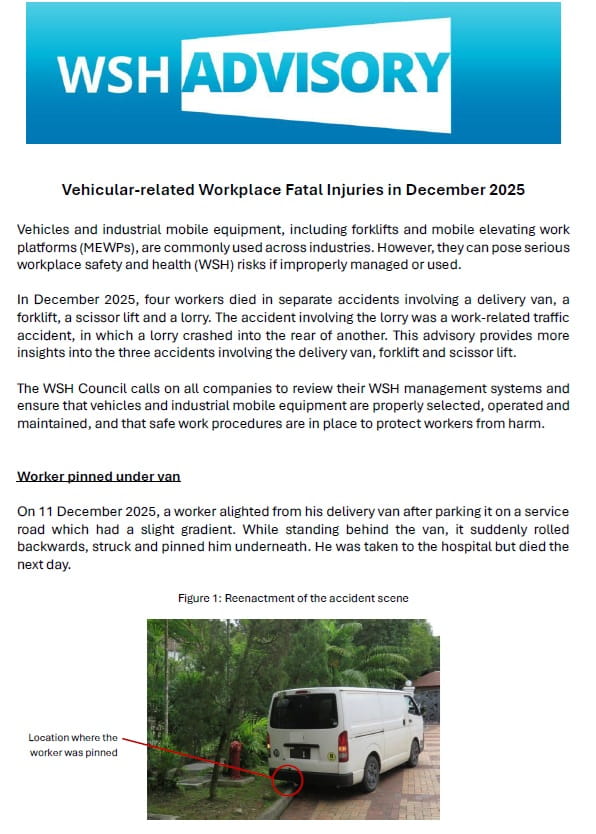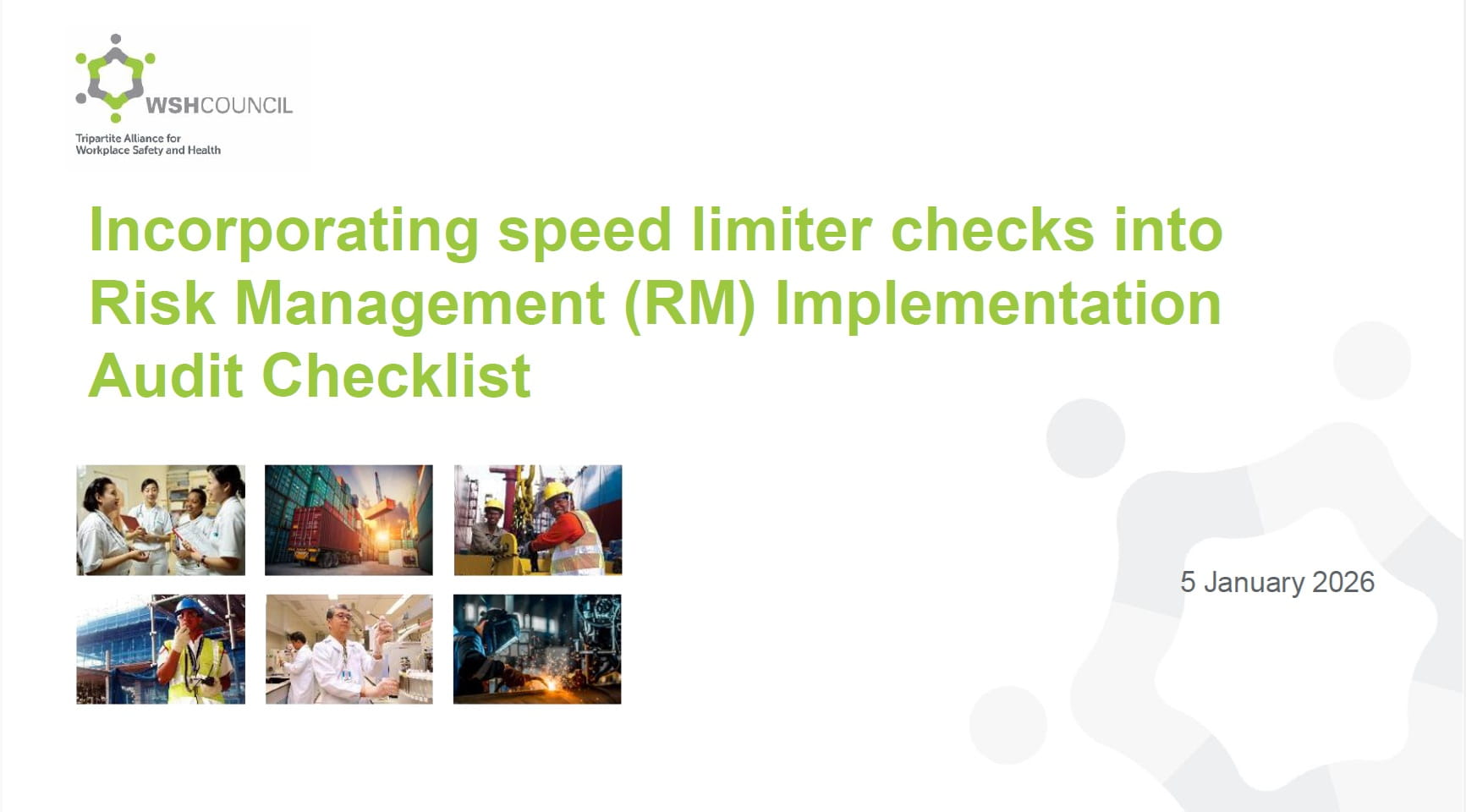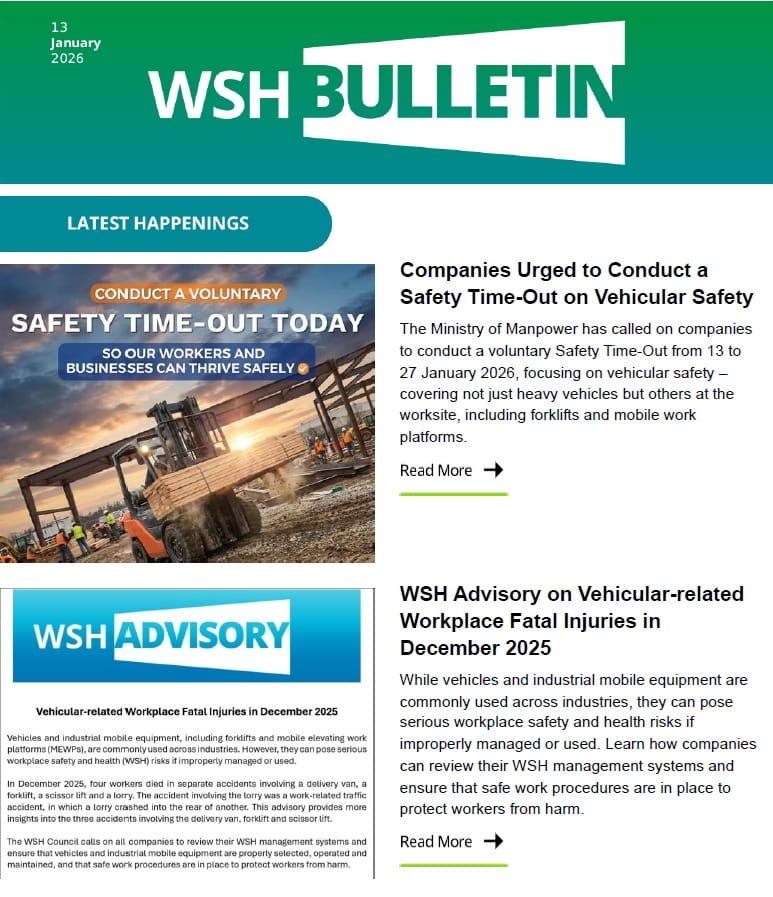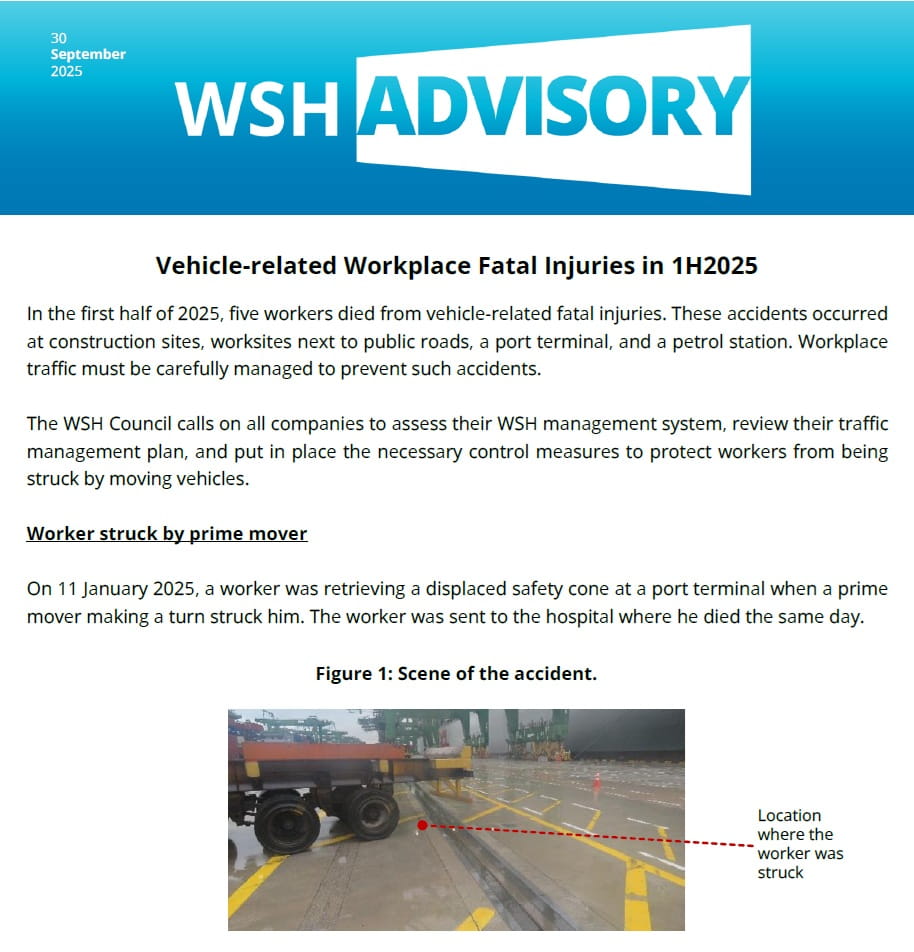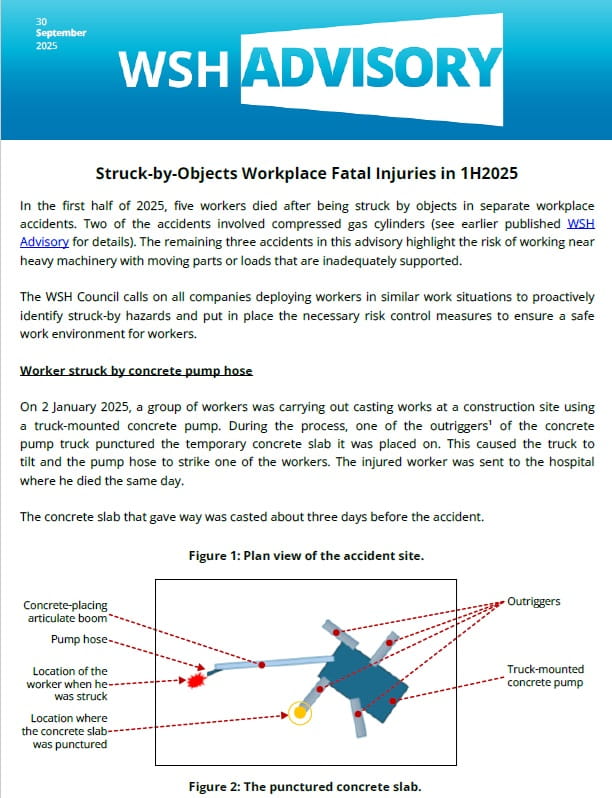About Vehicular Safety
Learn about the importance of vehicular safety. And find out about related laws, industry standards and key statistics.
Definition: Vehicular Safety
The three main factors that affect vehicular safety are the driver, the vehicle and the environment. The table below lists some of the considerations associated with each of these factors.
|
Factor |
Considerations |
|
Driver |
|
|
Vehicle |
|
|
Environment |
|
There are also potential hazards when vehicles are used on the roads and within workplace premises. Poor operation of vehicles can often lead to traffic accidents, destruction of property, and even injuries and deaths. Watch the video below to understand the importance of safe and good driving habits.
Laws and Industry Standards
As an employer, you are expected to comply with Singapore's WSH laws. You should pay particular attention to:
You should also observe relevant industry standards, such as:
- Code of Practice on WSH Risk Management (PDF); and
- SS 573: 2012 Code of practice for safe use of powered counterbalanced forklifts.
Please refer to the WSH (Approved Codes of Practice) Notification for the full list of approved Codes of Practice.
Statistics
- In 2019, vehicular incidents were one of the top three causes of fatal injuries at the workplace.
- Some of the incident types related to vehicular incidents include struck by moving vehicle and caught in/between vehicles.
Refer to Workplace Safety and Health Reports for the latest WSH National Statistics Report.

